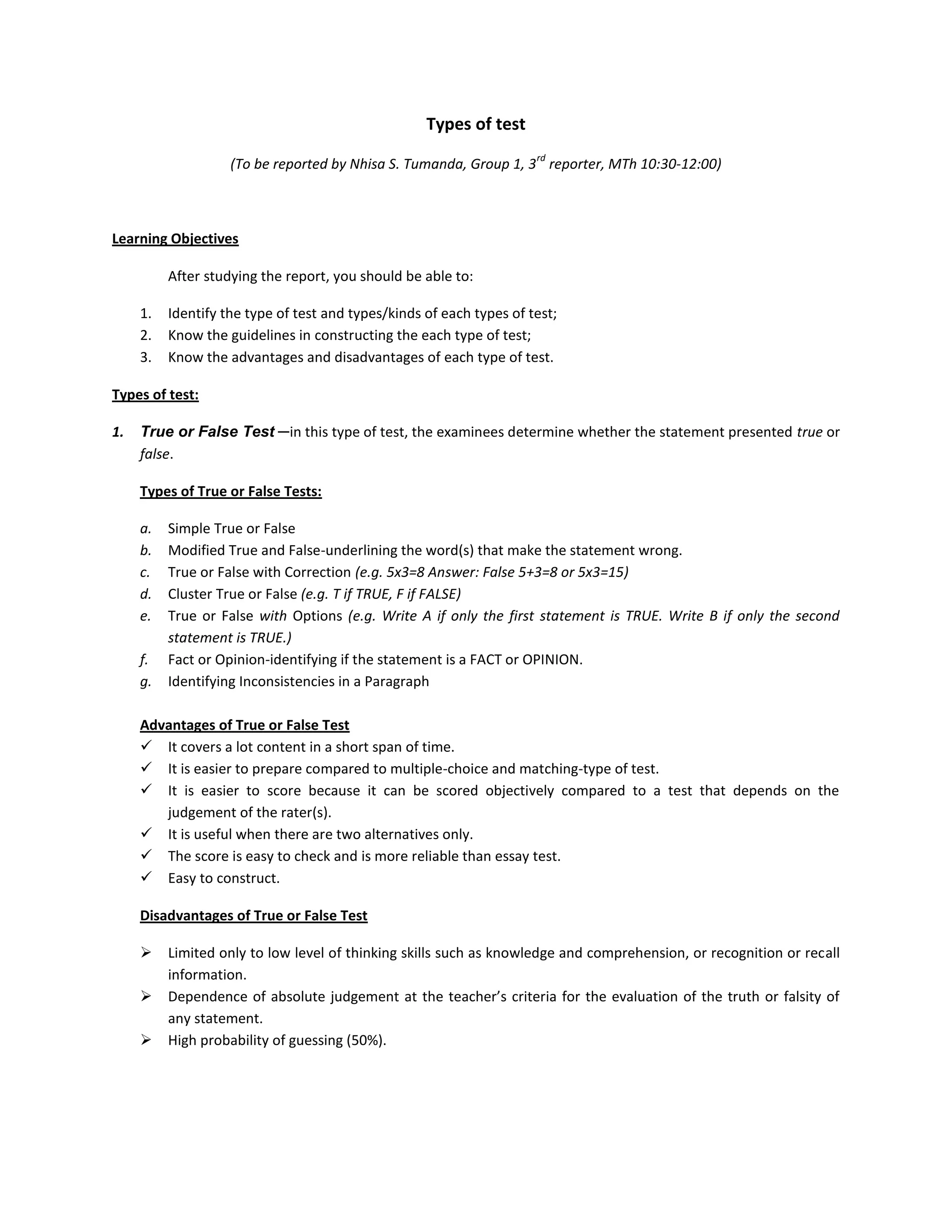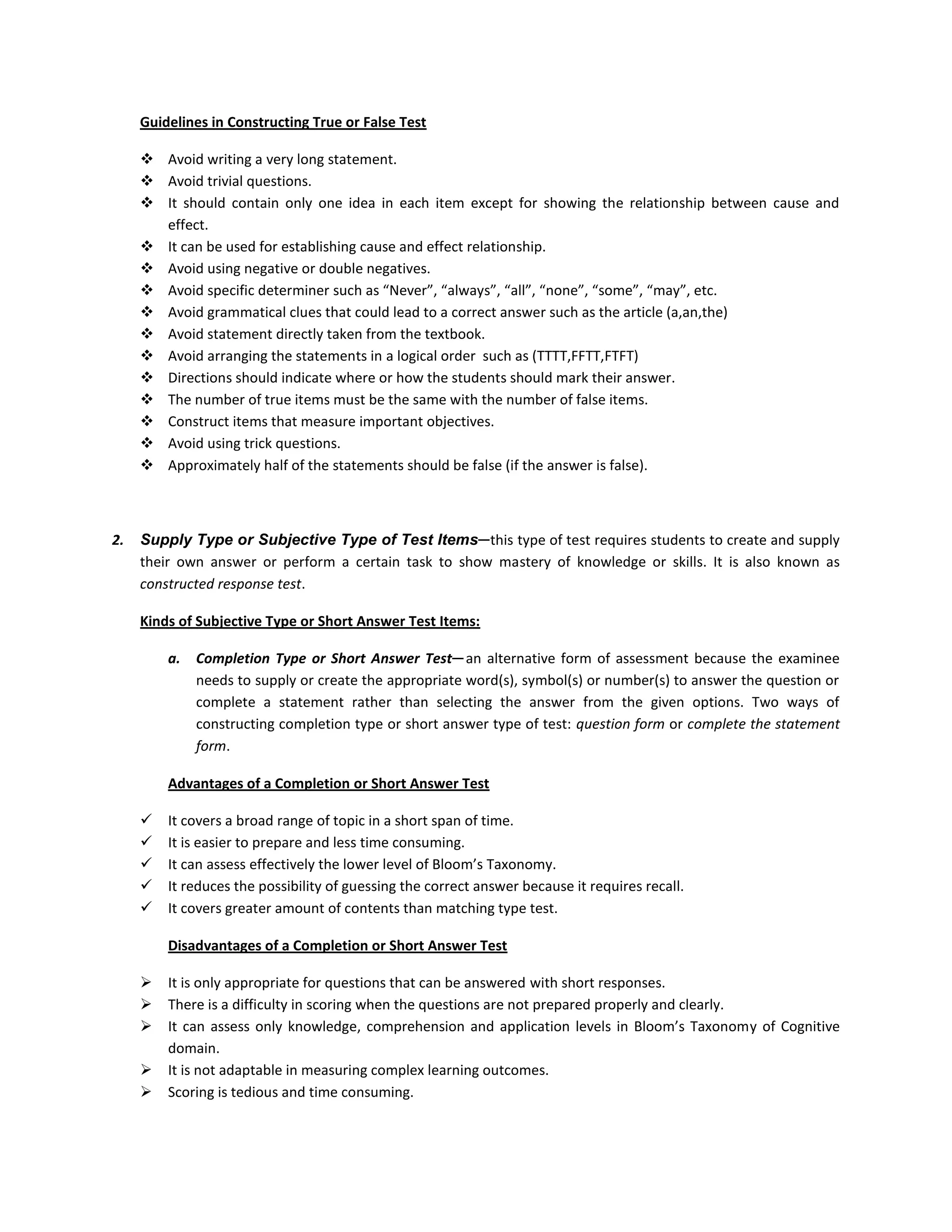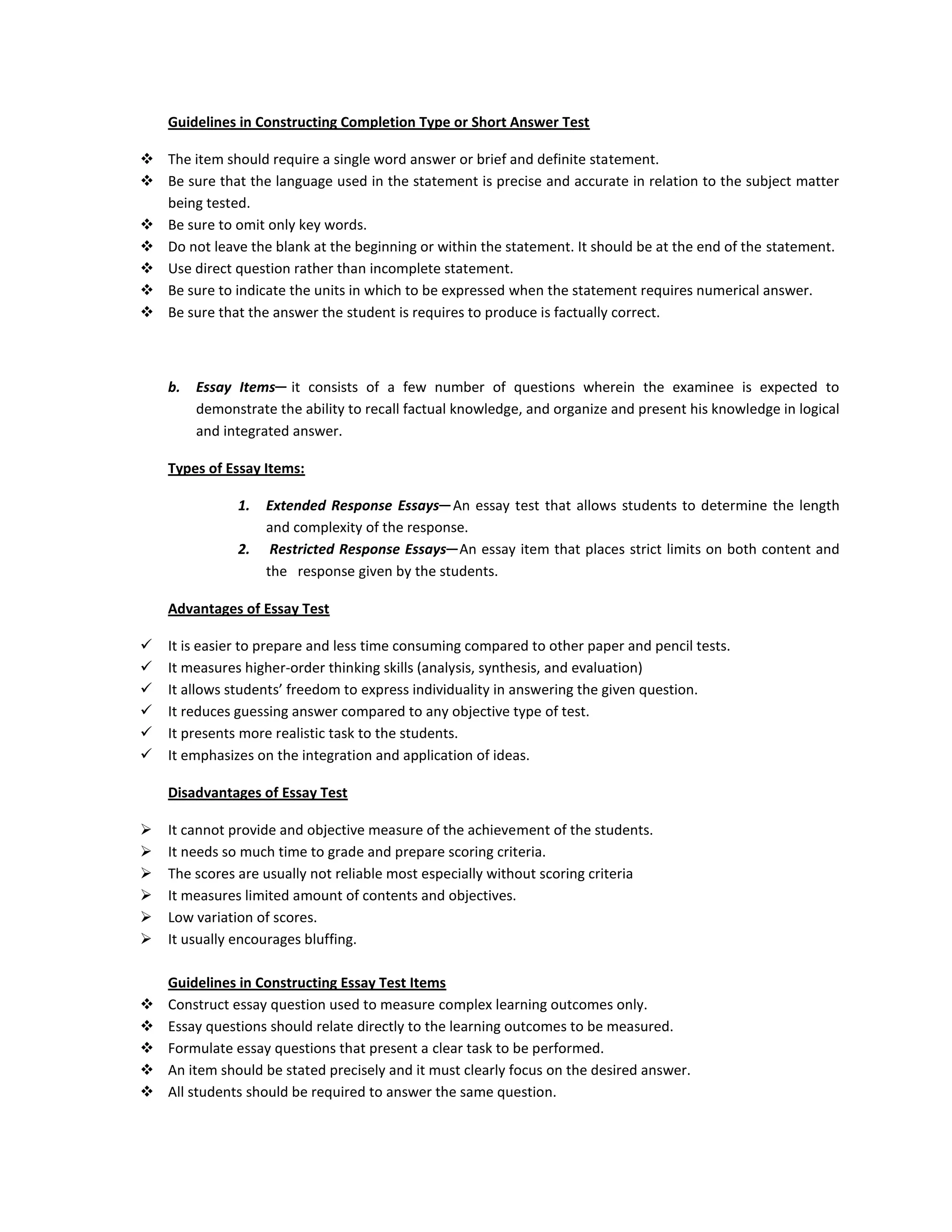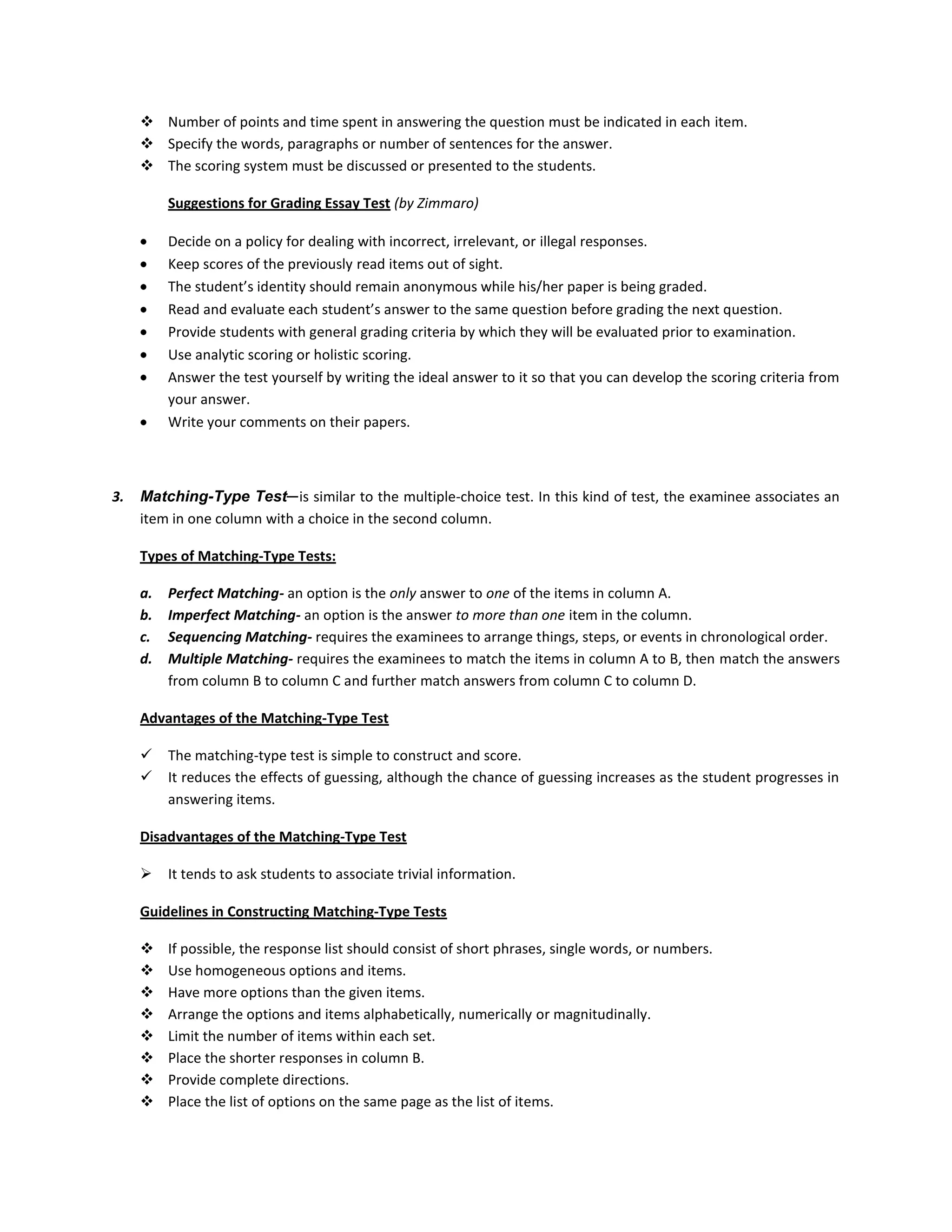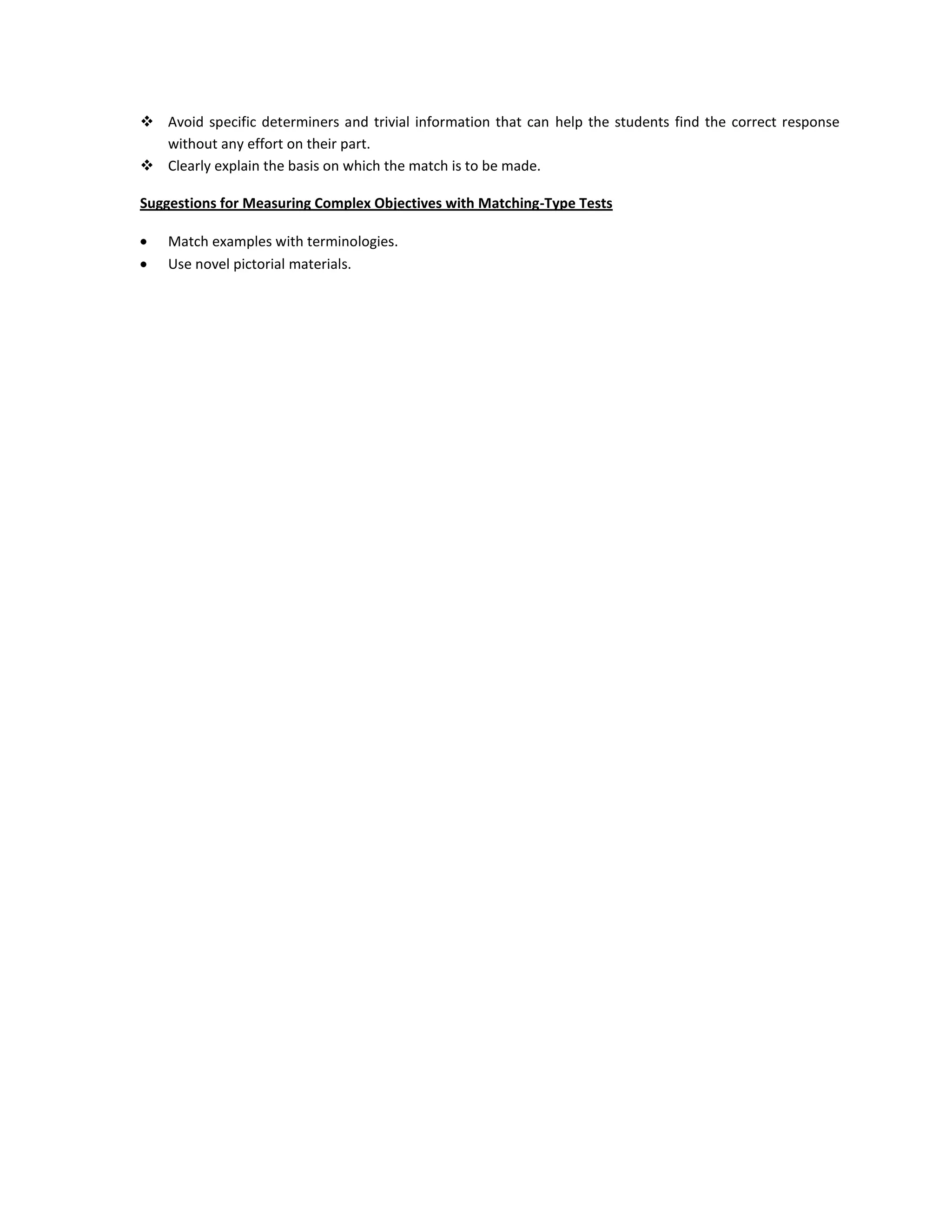This document discusses different types of tests including true/false, short answer, essay, and matching tests. It provides details on each type, including guidelines for constructing them and advantages/disadvantages. True/false tests can assess basic knowledge but have high guessing rates. Short answer tests reduce guessing and assess lower-level thinking but are time-consuming to score. Essay tests measure higher-order skills but are difficult to score reliably. Matching tests are easy to construct and score but often assess trivial information. Proper construction and clear guidelines are important for all test types.
